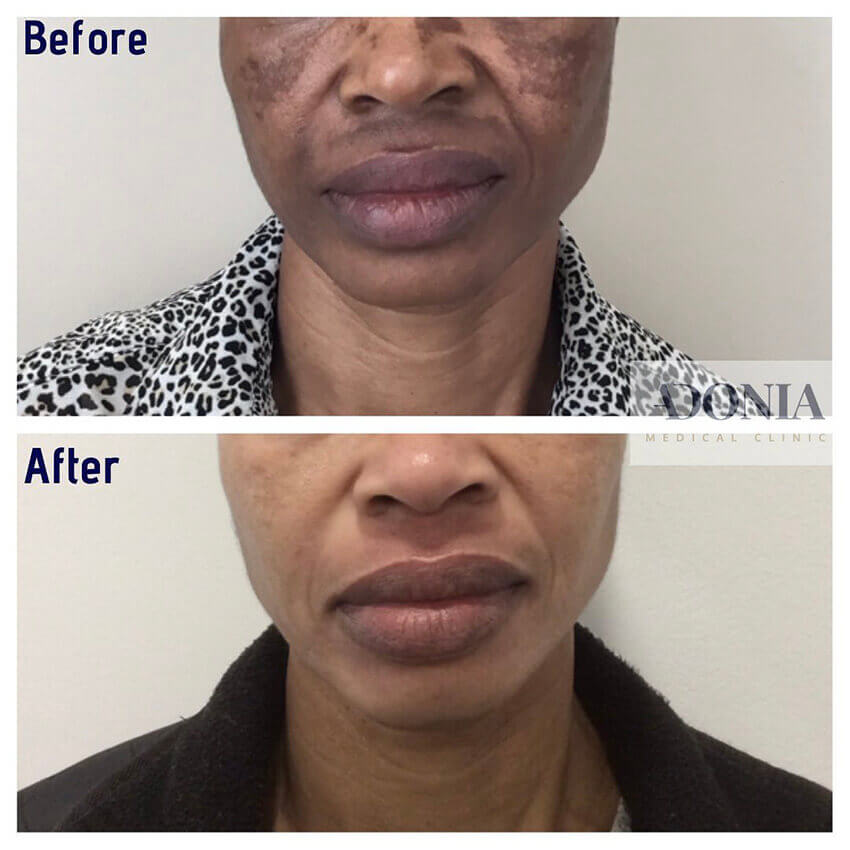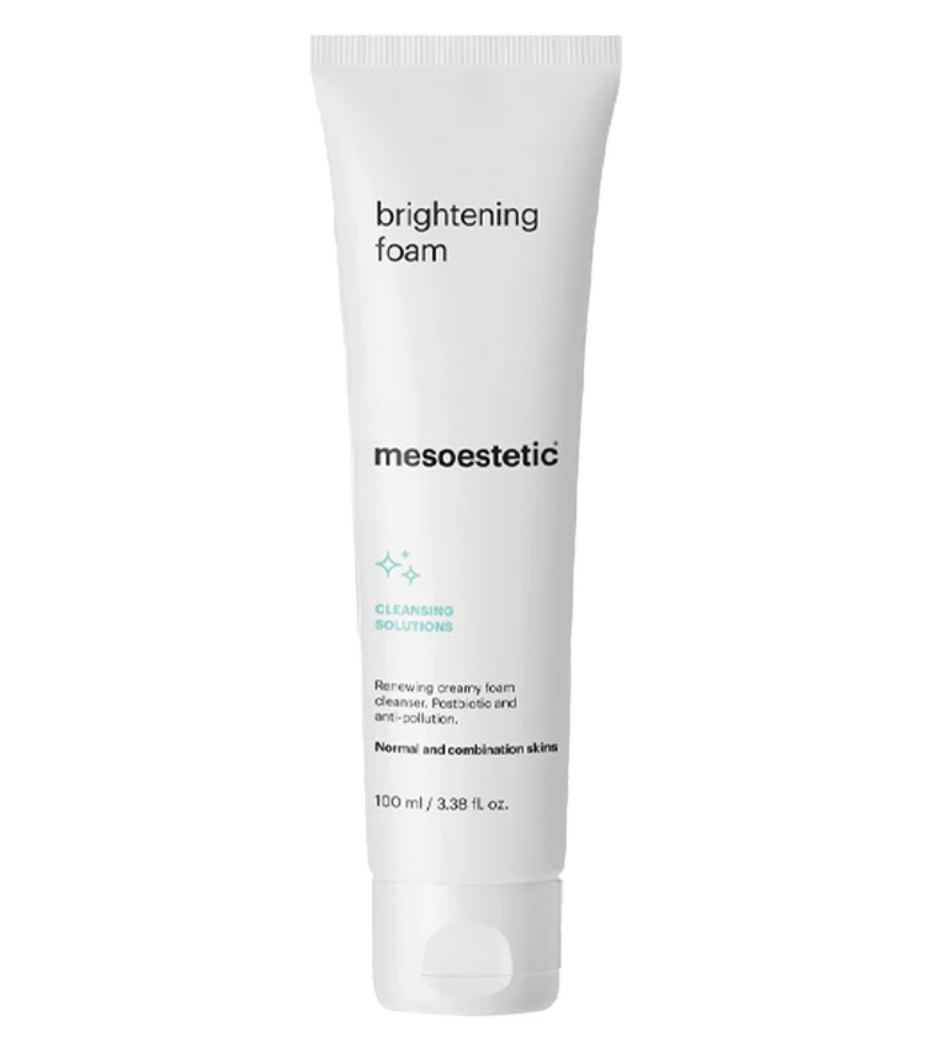Mesoestetic Brightening Foam is a creamy cleansing foam with AHA’s. Renewer, rebalancing and anti-pollution. Suitable for normal and combination ...
Hyperpigmentation explained
Skin pigment (melanin) is produced by melanocytes. These specialised cells determine skin tone and give some protection from the sun. Through age, sun exposure and trauma melanin can become unevenly spread leading to the appearance of uneven skin tone, dark marks or patches on the skin.
Skin brighteners contain ingredients known as tyrosinase inhibitors. These tyrosinase inhibitors help to balance pigment-producing cells. They come in various strengths and work to target dark patches and result in even skin tone.
At Adonia Medical Clinic in Central London, we have products and treatments which are able to tackle superficial as well as deep hyperpigmentation.
Causes
In many cases, hyperpigmentation is caused by prolonged sun exposure over time, however, it can also develop due to inflammation or changes in hormone levels. The problem can affect all types of skin, including Asian, Black, Caucasian and mixed heritage. Some conditions include:
- Freckles: small, coloured spots that are typically seen on fairer skin and develop to become darker during sunny weather. They can appear almost anywhere on the body.
- Age spots: these lozenge-shaped spots are usually seen on the hands and limbs, but can develop anywhere. They are caused by UV exposure.
- Melasma: also known as ‘pregnancy mask’, this creates dark patches of skin. We’ve detailed more about it on our Melasma page.
- Post-inflammatory hyperpigmentation: the result of skin injury, for instance from acne, burns or clinical treatments.
- Sunspots: known as solar lentigos
- Uneven or irregular skin tone
- Dark circles
- Hyperpigmentation post trauma, bites
- Hyperpigmentation post eczema or dermatitis
- Traumatic Scars
- Acne scarring
- Hyperpigmentation on the body: due to chronic friction
- Acanthosis nigricans: velvety thickened skin on the neck or underarms
- Hyperpigmented: knees, elbows and knuckles due to trauma or friction
Treatment
We offer a comprehensive list of treatments to address hyperpigmentation. In order to adequately treat the concern first, we need to understand the underlying cause. After a detailed history and examination, the expert team will put together a highly bespoke treatment plan adapted to your unique skin. This will usually include a review of current skincare and a discussion of active ingredients. It may include intensive facials to improve skin hydration and chemical peels to address superficial and deep pigmentation. Other treatments such as microneedling and AquaGold may be suggested to address long-standing hyperpigmentation.
If you are concerned about hyperpigmentation the first step to take is protecting your skin from the sun using SPF factor 30 or above and wearing protective clothing. Book in to be seen by a member of the expert team today.
Hyperpigmentation in Black and Asian Skin
Historically many products have been inadequate at addressing hyperpigmentation and dark spots in Black, those of African descent, Mixed heritage and Asian Skin. Dr Ejikeme and her expert team have been purposeful and diligent in attaining safe and effective products, procedures and technologies for all skin types. We are proud of the extensive range of evidence-based and scientifically-backed treatments hand-selected for our patients.

 020.3875.7399
020.3875.7399






